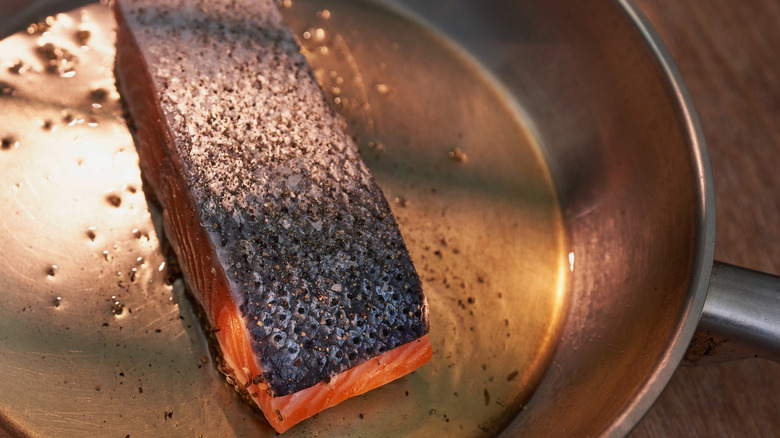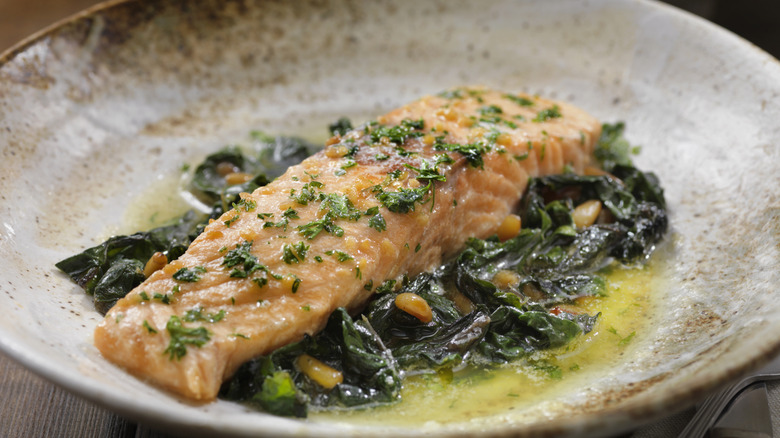Never Remove Salmon Skin Unless You're Cooking It Like This
For as versatile as it is, salmon is a delicate protein that can very easily be cooked incorrectly. There are countless mistakes to be made when cooking salmon, but one of the most important pertains to the use of its skin. While it's often essential to keep the skin on your salmon as you cook it because it can give your dish a great amount of crispness and flavor, this isn't the best course of action in some cases. Beyond times when you're eating salmon raw, like in sushi, the most notable instance where it's widely considered best to remove the fish's skin is when you poach it. When using this preparation style, leaving it on can lead to unsatisfactory outcomes, with the poaching liquid potentially becoming more oily, having scales fall into it, and overall giving the skin itself a gummy texture. For this reason, it's incredibly uncommon to eat poached salmon with its skin still attached.
With this in mind, however, the timing of removing the salmon skin is ultimately up for debate. While it's generally considered to be easier to remove the skin from poached salmon after cooking it, raw salmon skin can be an incredibly useful ingredient in its own right. If you remove it before poaching, it can be fried. Whether you're making salmon skin sushi — which is made by frying the skin, cutting it into small pieces, and rolling it together with rice and cucumber — or just frying and eating it alone like it's bacon, salmon skin has a ton of potential, meaning that wasting it is considered a terrible choice by many fish fans.
The argument for removing salmon skin after poaching it
While taking off the skin before poaching your salmon could lead to more uses for the flavorful part of the fish, it's not an absolute necessity if you don't have any alternative uses for it as an ingredient. Seeing as shallow poaching salmon is one of the quickest methods for making the fish, you might not intend on making use of salmon skin, in which case leaving the skin on until after is completely understandable. In fact, because the skin helps keep the fish intact as it cooks and protects it from overcooking too quickly, some even prefer the method of only removing the skin once the poaching is all said and done.
Plus, there's even one way in which leaving the skin on your salmon makes it better. By scoring the salmon skin before poaching it and removing it afterwards, you will arguably be rewarded with an even better piece of salmon than you would have had if you had removed the skin in the first place. Scoring prevents the salmon flesh from curling up in the liquid, creating a nicer presentation on the plate.

